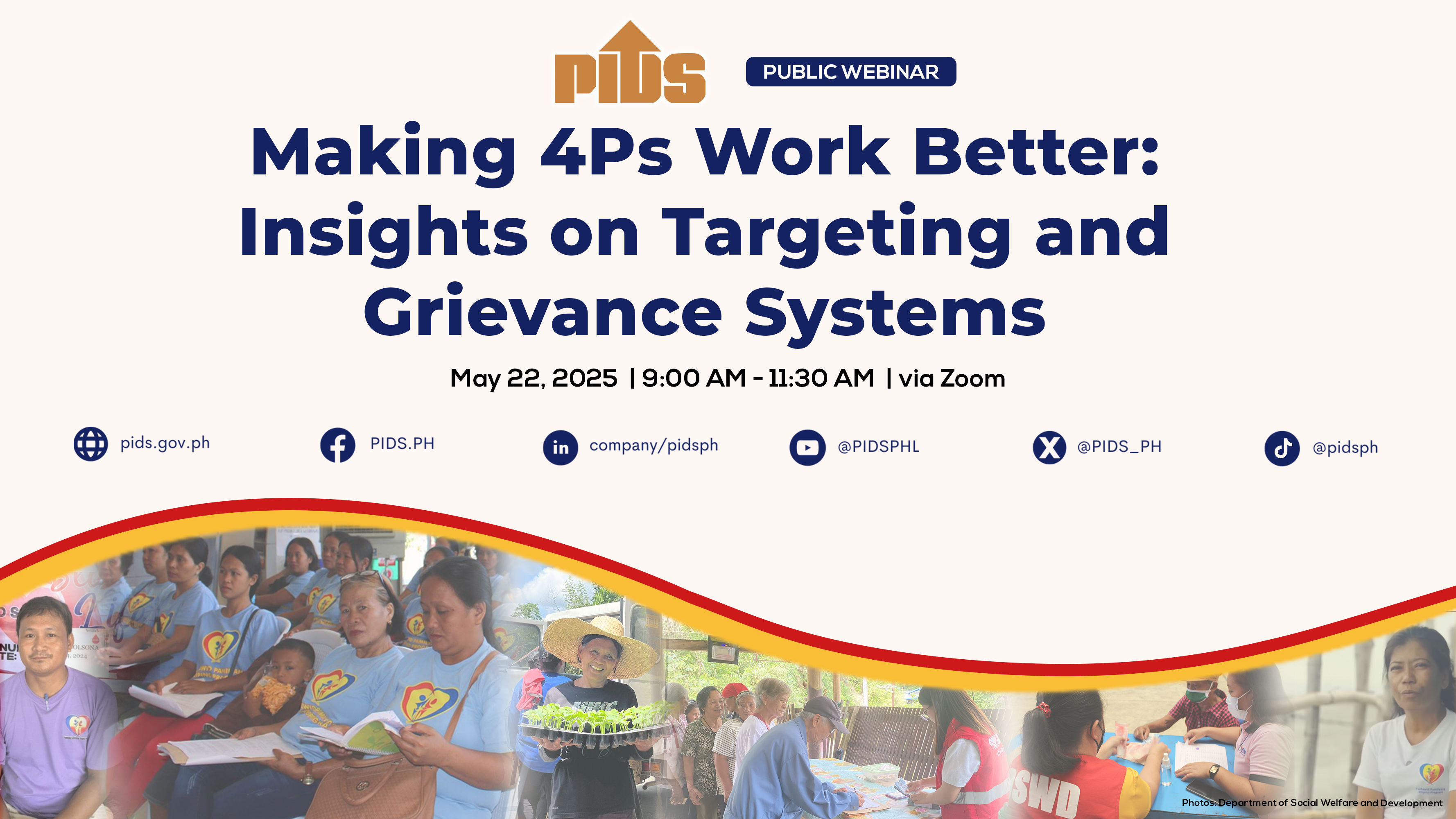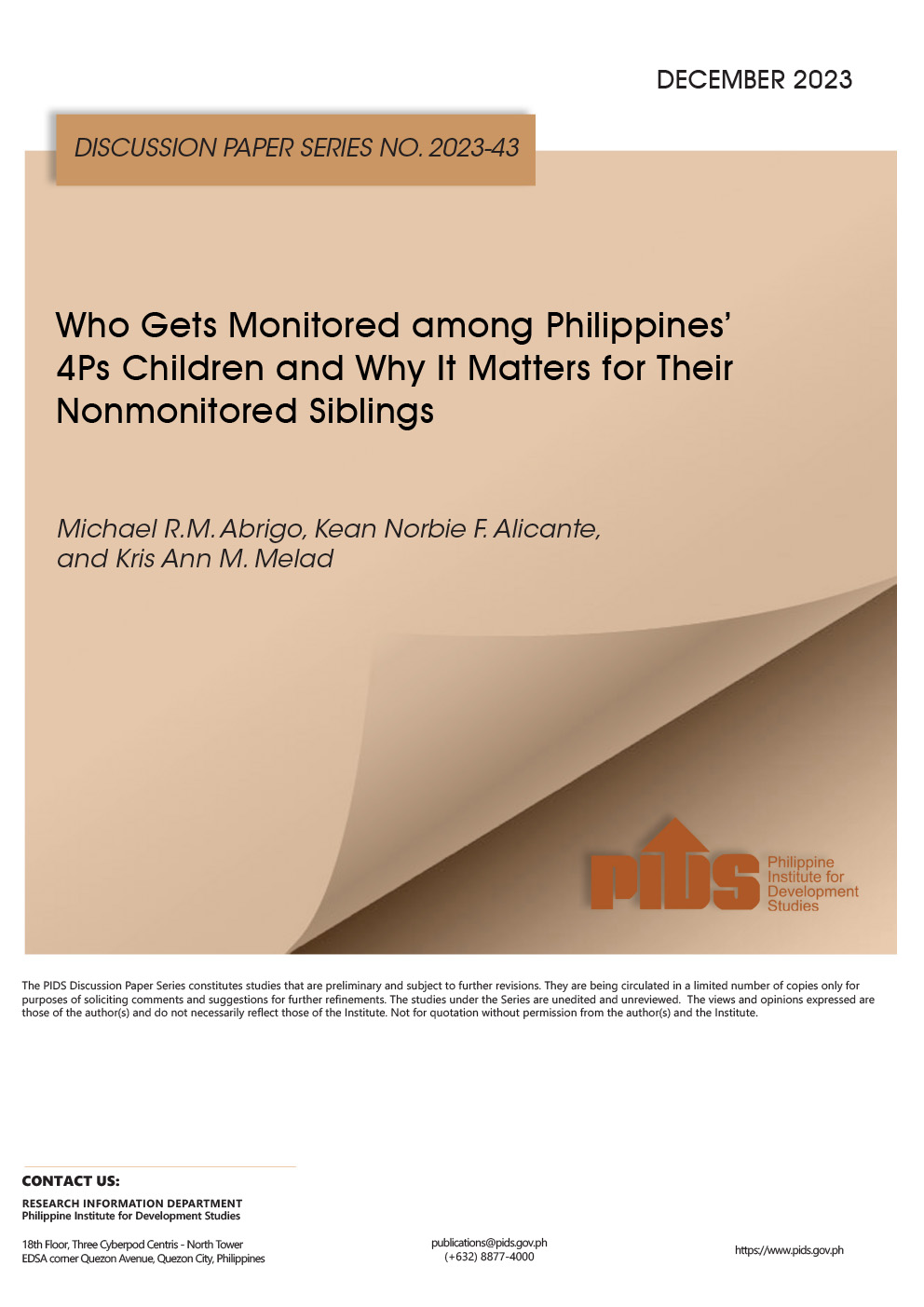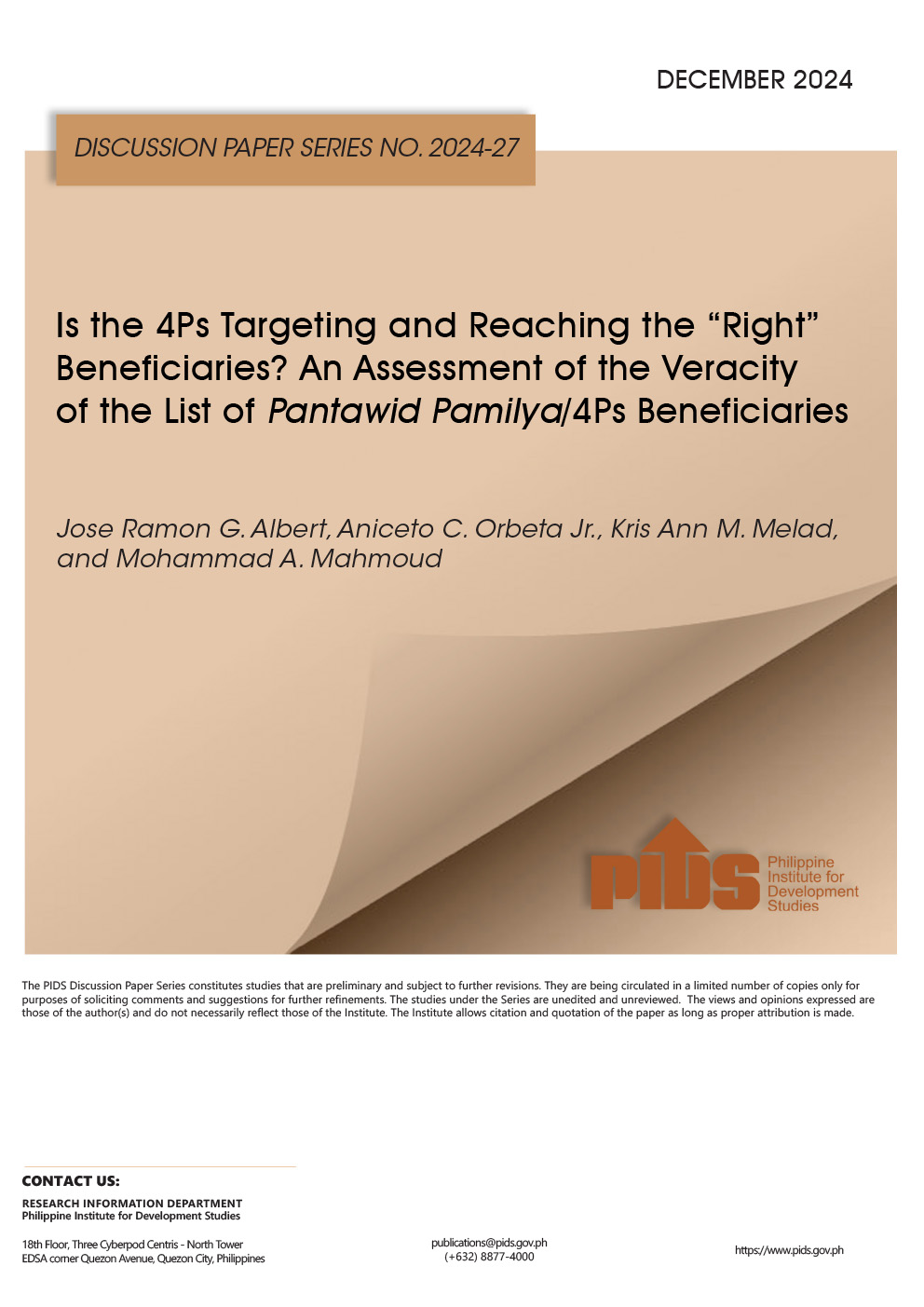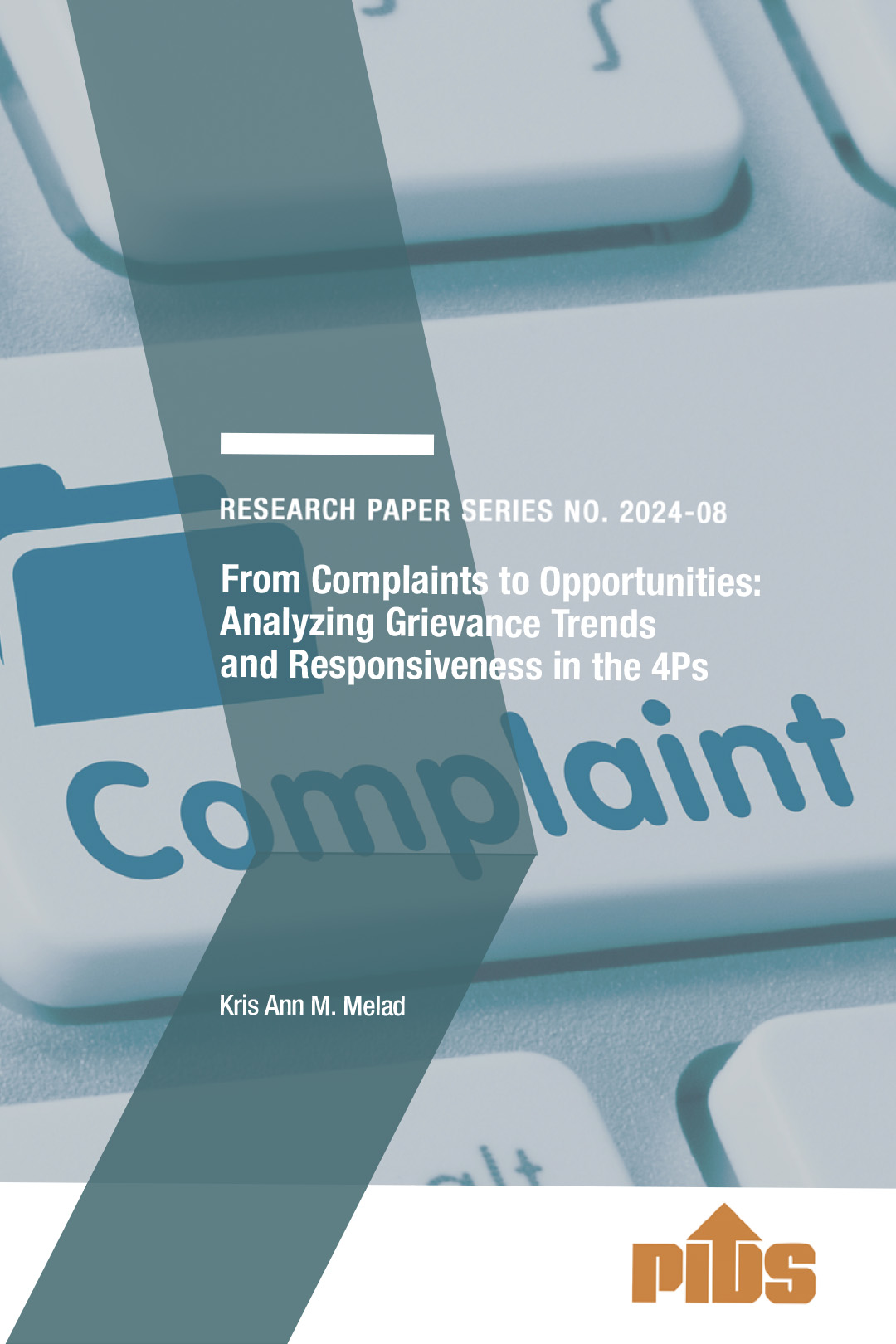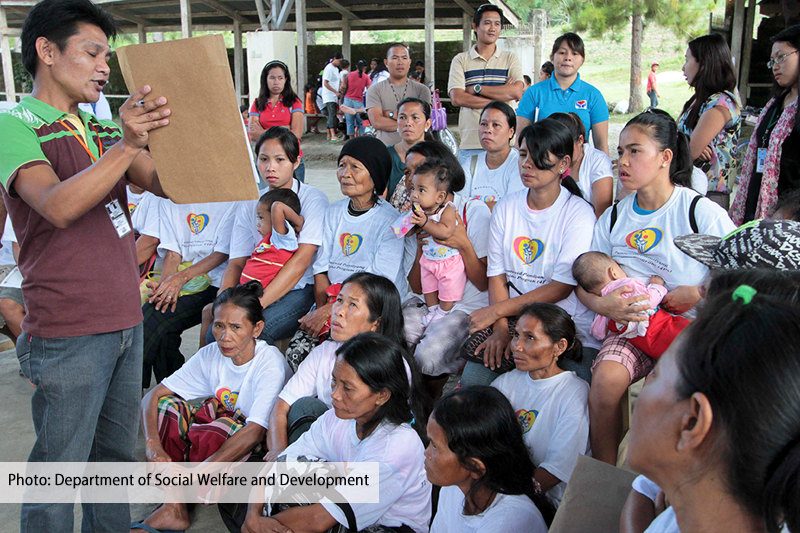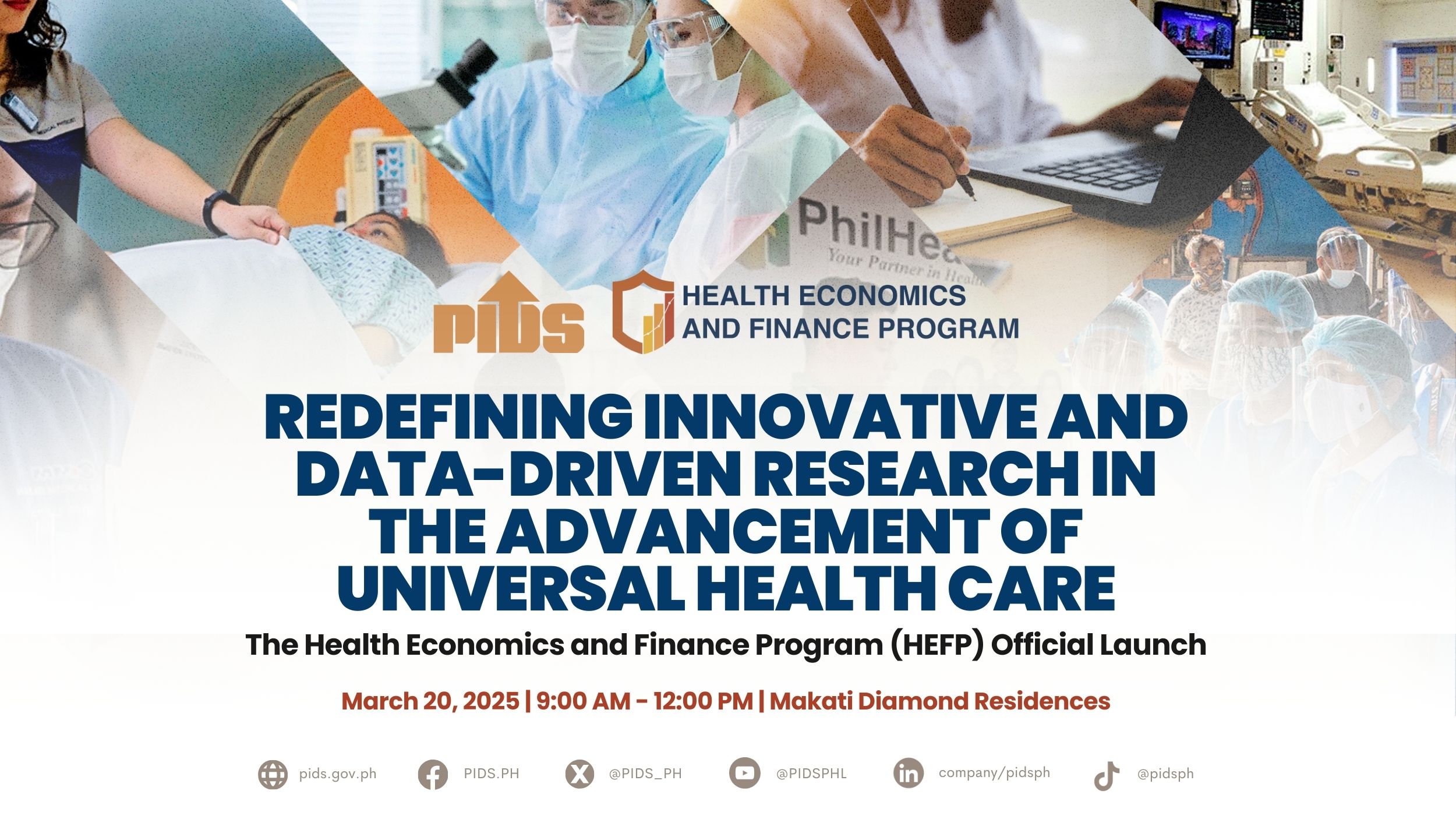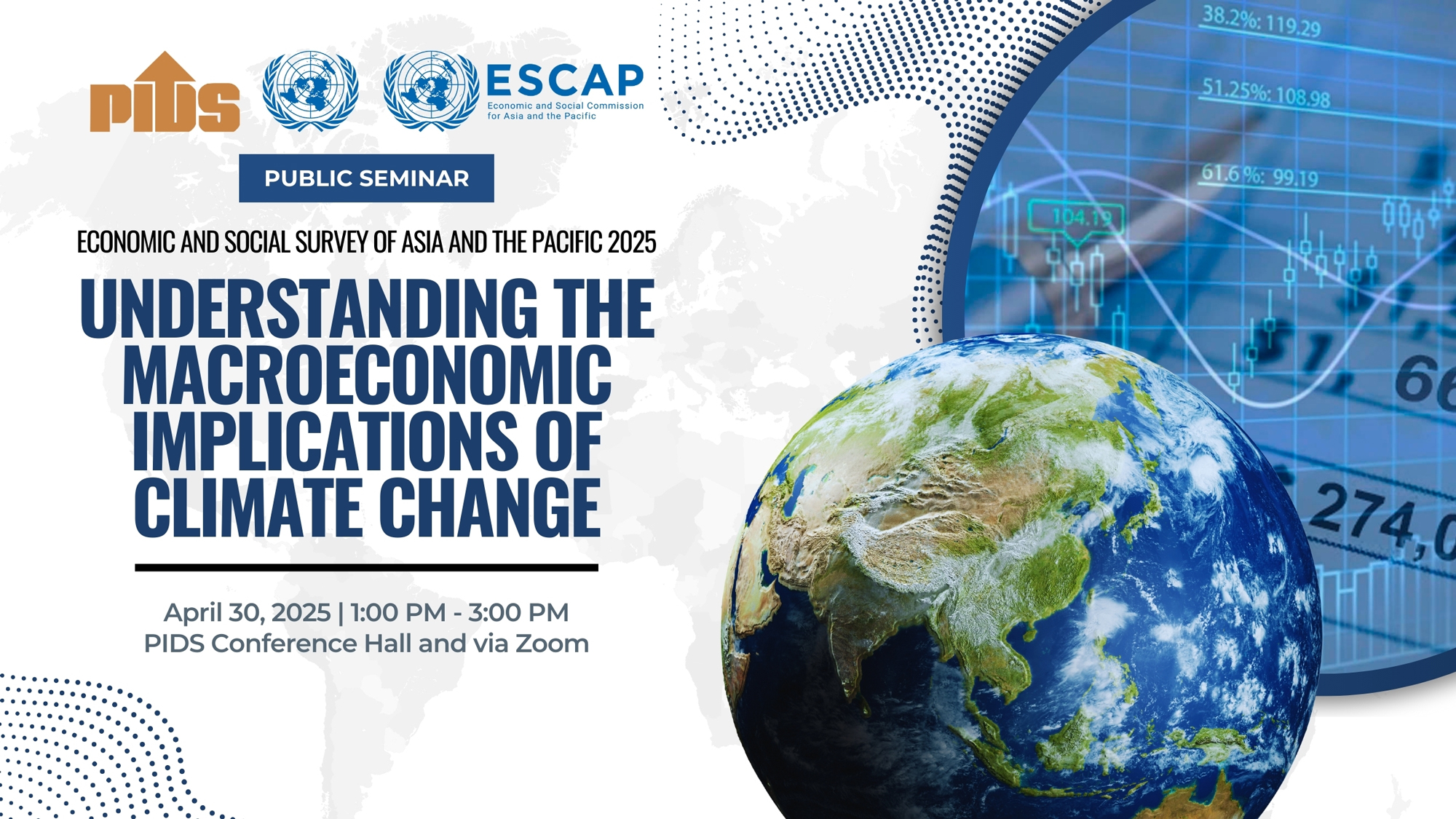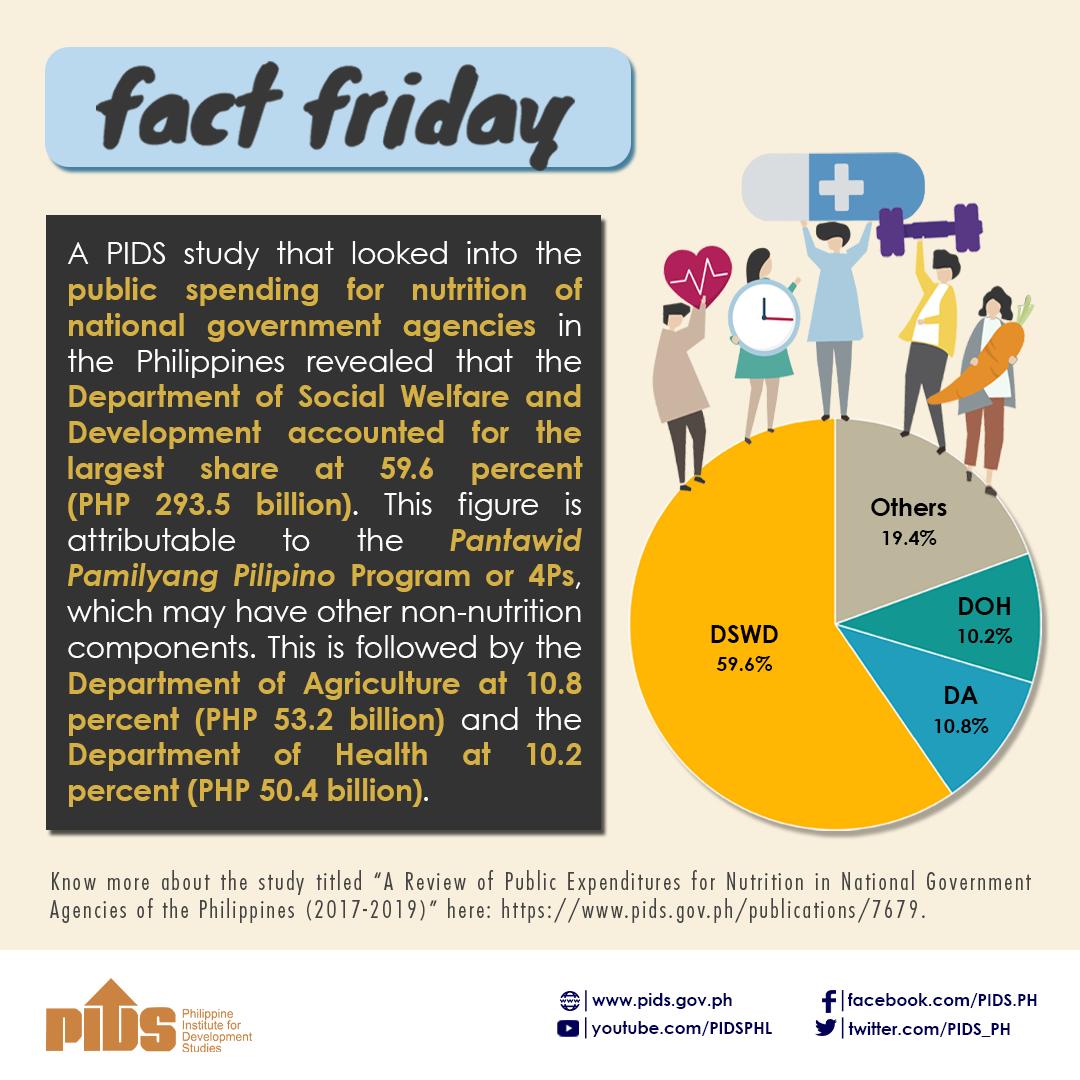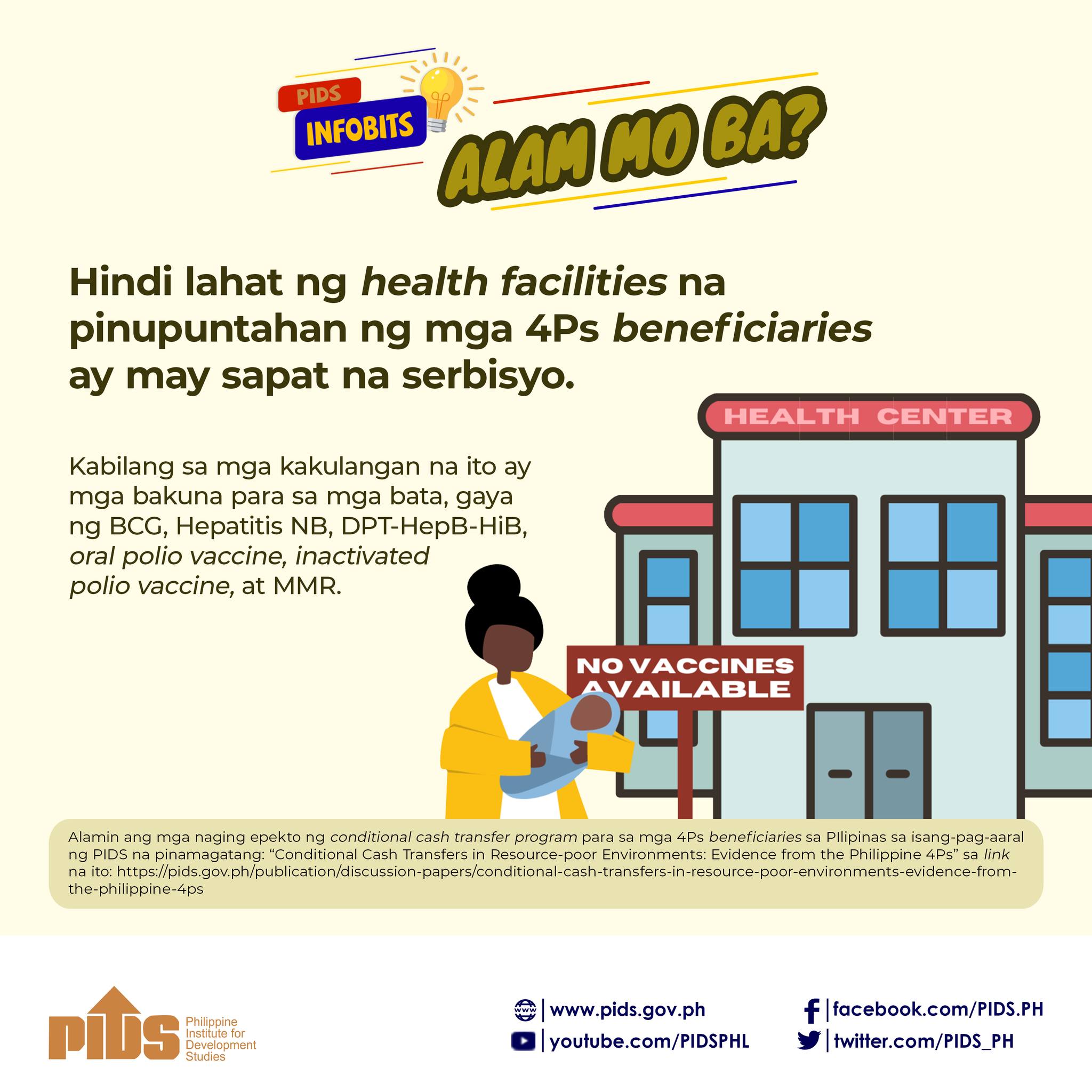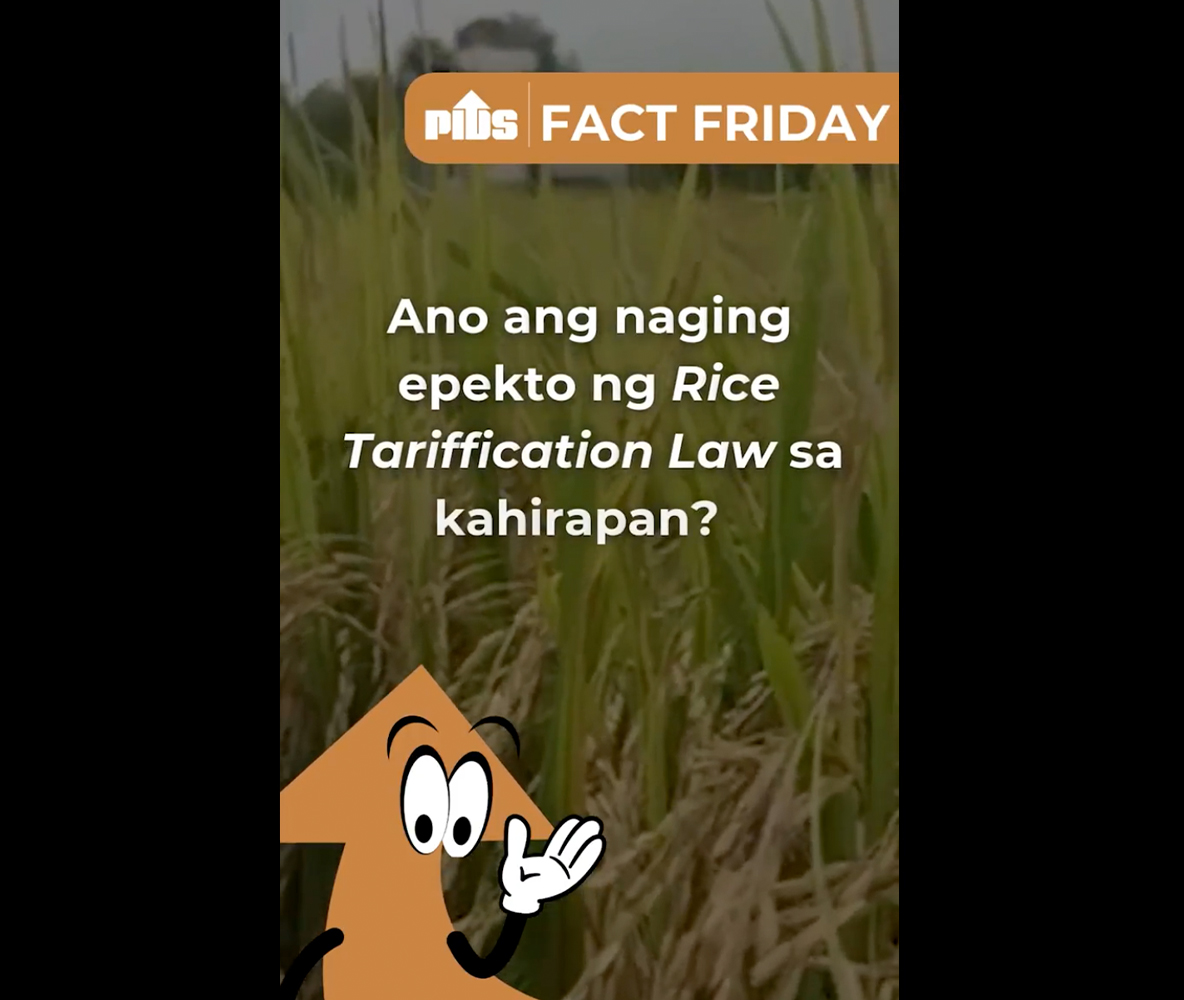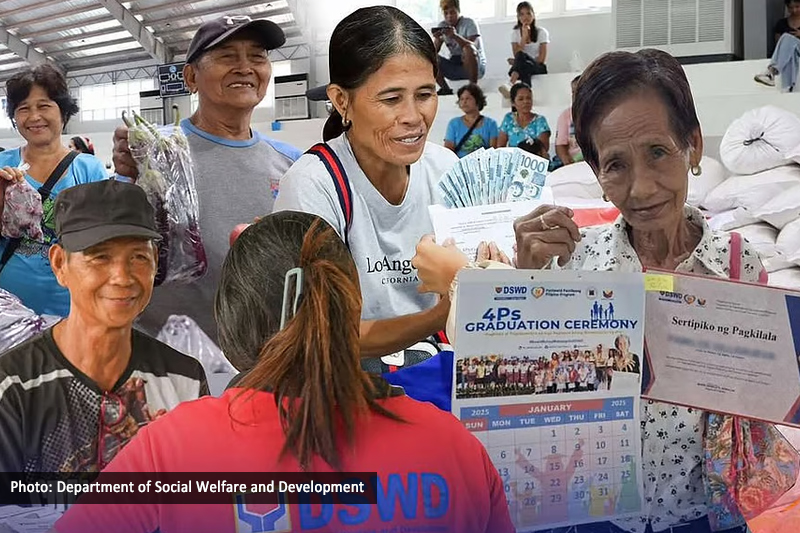
Nine in every ten Pantawid Pamilyang Pilipino Program (4Ps) beneficiaries belong to the poorest half of Filipino households—evidence that the program is reaching its intended targets, according to a new study from the Philippine Institute for Development Studies (PIDS).
“There has always been criticism against the 4Ps database that they may not all be really poor… but they are still low-income,” said Dr. Jose Ramon Albert, PIDS Senior Research Fellow.
The study, “Is the 4Ps Targeting and Reaching the "Right" Beneficiaries? An Assessment of the Veracity of the List of Pantawid Pamilya/4Ps Beneficiaries,” was presented at a webinar on May 22, 2025.
Mandated by Congress under Republic Act No. 11310, the research evaluated the accuracy of the 4Ps beneficiary list using Listahanan, the government’s main targeting database.
Among the key findings: while static data, such as name, birthdate, and household address, is 99% accurate, the program struggles with dynamic data like income, education, and employment status, which change frequently and are only 71%–76% accurate.
“There are things that change very fast… even cell phone numbers… so we need to find a way of making sure that we are constantly updating information,” Albert added.
Urban areas remain harder to reach
Despite the high overall accuracy, the study revealed significant urban-rural targeting gaps.
“Apparently, rural areas have better targeting accuracy—maybe 70%… much better than the urban areas of about 40%,” Albert noted, underscoring the need for tailored strategies in cities.
“We need specific urban models that can better capture… or better target the poor,” he said.
DSWD moves toward a unified and digital registry
To address these issues, the Department of Social Welfare and Development (DSWD) is developing a Dynamic Social Registry, or iRegistro, which will unify and digitize all beneficiary data across government programs.
This system will allow real-time updates and is designed to sync records, so when a 4Ps beneficiary updates their information, it reflects across programs like the Sustainable Livelihood Program.
“Regardless of the program, the moment a survey is completed, and the enumerator leaves the household… the information can become outdated immediately… employment status may change the next day,” said DSWD-National Household Targeting Office Director Jimmy Francis Schuck.
DSWD has also begun piloting online and self-service updating, enabling the 4Ps beneficiaries to transact with government services online.
To secure the system, Schuck added that by using the Philippine national ID (PhilSys) authentication, beneficiaries are verified.
CBMS to replace Listahanan with national ID verification
The Philippine Statistics Authority (PSA) is also phasing in the Community-Based Monitoring System (CBMS), which will replace Listahanan by 2024.
“The 2024 CBMS will replace Listahanan… and authentication through the national ID will ensure beneficiaries are who they claim to be,” said PSA OIC-Deputy National Statistician Minerva Eloisa Esquivias.
Using the PhilSys for verification, the CBMS aims to reduce inclusion and exclusion errors and support not just 4Ps, but also other social protection programs like the Expanded Solo Parents Welfare Act and the social pension for indigent senior citizens.
“We will make sure that all procedures that will be employed in the conduct of CBMS operations will be followed… and that there is a technical assistance responsibility from us,” Esquivias clarified.
Legislative insights – minimize errors, strengthen graduation support
Meanwhile, Committee on Poverty Alleviation Secretary Ma. Lourdes Mendoza from the House of Representatives highlighted the policy consequences of targeting choices, particularly inclusion and exclusion errors.
“There are constant complaints that the poor are left out, while non-poor households are receiving cash grants,” she said.
Mendoza also urged the DSWD to provide stronger graduation support for households exiting the program, suggesting that it consider leaving program slots temporarily vacant for truly poor households.
“Can LGUs support graduates of the program, especially in poor areas?” she asked, warning that without support, families may slide back into poverty.
Mendoza also called for greater interagency cooperation, citing PIDS's limited access to crucial datasets.
“The 4Ps database should serve as a dynamic progress report card for each beneficiary,” she said, noting that the data must reflect changes in health, education, and well-being throughout and beyond program participation.
Watch the forum playback at https://bit.ly/pidslive052225 or read the full study at https://bit.ly/pidsdp2024-27. — MJCG

